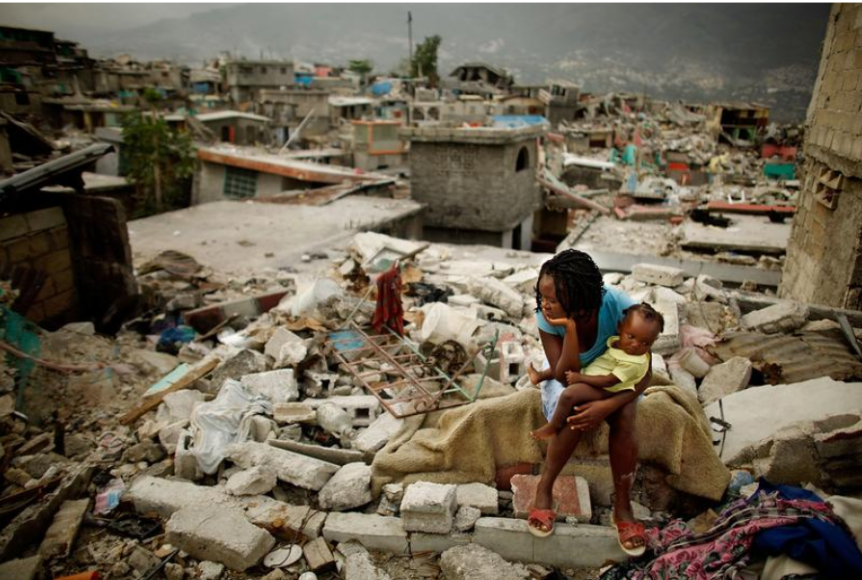Haiti’s Independence Debt

The Caribbean nation of Haiti stands as a testament of resilience to constant exploitation, a product of the first and only fully successful slave rebellion in history. The Haitian revolution began in 1791 and ended in 1804, leading to the emancipation of 500,000 slaves as well as formally gaining their independence from France. Haiti emerged as the first independent black republic in the world, setting an inspirational precedent for oppressed peoples globally. However, woven within this inspirational tale of liberation emerged a factor that would cast a formidable shadow over Haiti’s political and economic state for more than two centuries: Haiti’s Independence Debt.
Haiti’s current situation
Haiti is the poorest country in the Western Hemisphere and has been long plagued with poverty, civil unrest, and political and economic instability. In 2022, Haiti had a GDP of $1,748 per capita, a notable distinction compared to the US GDP of $76,399 per capita.
Along with this, the country is heavily dependent on foreign aid. Between 2010 and 2020 the United Nations allocated more than $13 billion in foreign aid towards disaster relief and development programs, though Haiti still despairs. Currently, 59% of Haitians live below the poverty line. Over one-fifth of children are at risk of cognitive and physical limitations, and only 78 percent of 15-year-olds will survive to age 60.
The cost of freedom
A devastating consequence would emerge after General Jean-Jacques Dessalines led Haiti’s revolutionaries to victory in 1804 in the Battle of Vertieres. In 1825, Louis XVIII’s successor, Charles X, sailed over to Haiti with 14 warships and 500 cannons. He offered formal recognition of Haiti’s independence in exchange for a hefty price tag: 150 million Francs.” Rejecting this offer would certainly mean war. With its seaports surrounded by warships and the prospects of war looming overhead, Haiti had no choice but to agree. This would set Haiti down a vicious cycle of debt that would stifle its development as an emerging nation for centuries to come.
The newfound debt was to be paid off in 5 separate installments in order to compensate French slave owners for their lost revenues from slavery. Because 150 million Francs was almost 10 times Haiti’s annual budget, the government was forced to empty out its treasury and borrow 30 million Francs from French banks in an effort to make the first two payments. It was no surprise when Haiti was unable to repay the substantial interest on the loans and subsequently defaulted.
The Impacts
With the interest from all the loans, Haitians ended up paying more than twice the value of the colonists’ claims, stripping the resources Haiti desperately needed in order to build a prosperous nation. Jean-Pierre Boyer, the Haitian president from 1818-1843, was forced to increase taxes in order to pay back the loans as well as pause projects aiming to develop a national schooling system. These projects would have certainly put Haiti on the right track to prosper after decades of mistreatment. The impacts of the lost funding stretched beyond the education system, as the independence debt is directly linked with the inadequate access to healthcare and the country’s inability to develop public infrastructure, leading many to suffer today.
Later on, Haiti’s development faced added complications due to the 1915 U.S. invasion of Haiti. To justify their invasion, the United States claimed that they invaded Haiti to “restore order and maintain political and economic stability in the Caribbean.” However, in their attempt to “restore order”, the United States dissolved Haiti’s parliament at gunpoint, terrorized citizens, and controlled its finances for more than 30 years. The United States’ actions added to the chaos, and further plunged Haiti into poverty. In total, around 15,000 Haitians were killed during the U.S. intervention in the country. After the U.S. siphoned off $500,000 dollars from Haiti’s National Bank to Wall Street, it withdrew in 1934, leaving behind a legacy of poverty and exploited workers.
Michelle is a writer who enjoys playing tennis, speech and debate, listening to music, and collecting keychains. She loves birds and enjoys going on runs.







